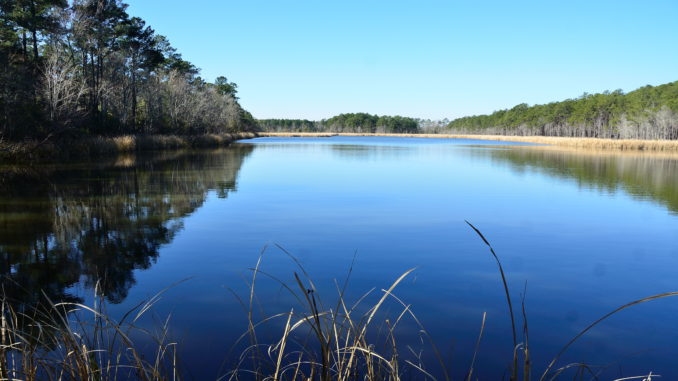
All highway projects aren’t bad for wildlife
Over the past 20 years, federal dollars have upgraded transportation facilities in every county in both North Carolina and South Carolina to handle the booming human population settling in the South. Literally thousands of miles of new blacktop have relieved traffic congestion and allowed travelers to get to their destinations in a more-efficient manner, and few will complain about the lack of slowdowns on the highway. But these transportation projects all over the eastern seaboard have taken their toll on wildlife.
Every time a new road corridor is established, substantial wetland acreage and native wildlife habitat are destroyed. Typically, wildlife suffers directly from highway mortality and indirectly from collaborative habitat loss. However, larger highway projects with significant grade improvements may have created features where waterfowl are gaining a foothold.
Just about every road project in the eastern part of both Carolinas will require significant fill to raise the grade to an acceptable level, especially projects east of I-95. Since fill dirt can be expensive to transport, most contractors will source their earthen material from borrow sites immediately adjacent to the roadway corridor, creating large lakes scattered all along the corridor. And anybody who has ever driven past these lakes during the winter may recall seeing large flocks of ducks, geese and even tundra swans.
One person who is keeping tabs on the waterfowl using these borrow pits is John Stanton of the U.S. Fish and Wildlife Service. On his travels to North Carolina’s Outer Banks each winter, he gets plenty of opportunities to glass the massive flocks of waterfowl using these roadside lakes. Waterfowl is Stanton’s primary concern as a biologist for the migratory bird field office since he is the supervisory wildlife biologist of the migratory bird field office for the Southeast.
According to Stanton, these borrow pits will — under the right conditions — provide benefits to both migratory and resident waterfowl. The borrow pits along US 64 are a prime example of how wild birds will find a use for these bodies of water.
“These borrow pits are well used by Canada geese, ring-necked ducks, hooded mergansers and some other ducks, but the majority of these birds are only using these ponds briefly,” he said. “The majority of the migrating flocks will use them for a day or two along their migration route for convenience.”
The majority of the borrow pits along major highways are located in areas with limited access from the public. Most landowners who retain the ownership of these ponds prevent hunter access, effectively creating a refuge.
“Even though these ponds fall way short of native duck habitat, waterfowl will use them as a resting place for loafing, preening and just floating around. These birds can sit on open water away from predators,” he said.
Waterfowl are opportunistic by nature. They are pre-programmed to take advantage of ephemeral or temporary habitats and will quickly change their game plan when a natural or unnatural environmental force presses. In unique circumstances, waterfowl will become residents in these borrow pits for a longer interval when rich food sources are nearby.
“As a rule of thumb, most ducks will stay within a 20-mile radius of an energy-rich food source, and as long as these birds on the borrow pits are not disturbed, they may continue to use them until something changes,” he said.
In fact, there is a borrow pit along US 64 near Tarboro, N.C., to which roughly 4,000 tundra swans return each fall. According to Stanton, they find solid food sources in the adjacent and nearby fields, and these landowners are restricting access to the borrow pits that creates a phenomenon unlike the typical one- or two-day stay.
“The key point is access and ownership of these ponds. If these areas were intensely hunted, they wouldn’t use them as much,” he said.
While the thousands of acres of borrow pits scattered all over the Carolinas may be providing new areas for ducks to land, hunters and other waterfowl enthusiasts must remember that these ponds are not replacement habitat for their natural feeding, resting and roosting grounds. Yet these borrow pits have the capacity to retain a portion of the migrating flock, even for a brief period.
“Borrow pits, protected from disturbance, provide adequate roosting and resting habitat for a select group of waterfowl species on a temporary basis (and) that is a definite positive benefit for harboring migrating flocks during the winter season,” he said.




Be the first to comment